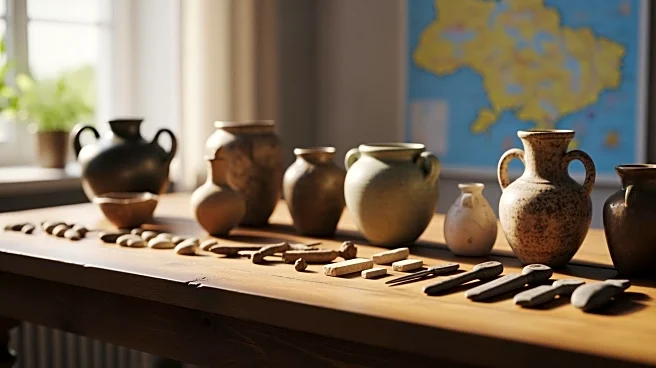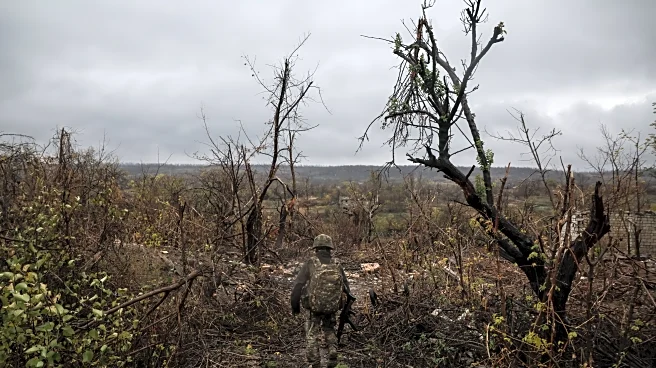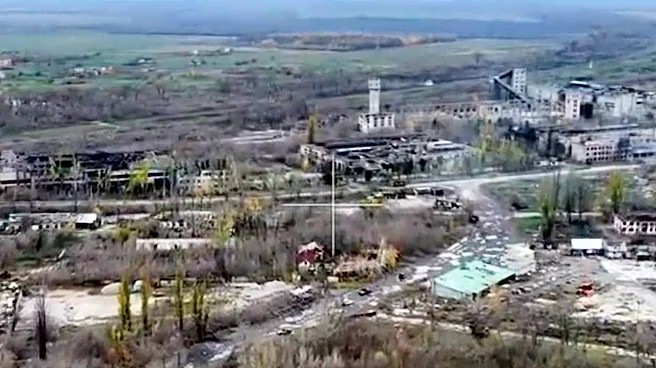What's Happening?
Archaeologists are urgently working to preserve an 18th-century shipwreck in southeastern Ukraine, which has been exposed due to the ongoing conflict with Russia. The site, located on an island in the Dnipro
River, was revealed after the destruction of a major dam by Russian forces. This has left the historical site vulnerable to rapid deterioration and the proximity of the front line. The war has impacted various aspects of Ukrainian life, including efforts to safeguard the nation's historical heritage. International archaeologists are collaborating to save the shipwreck from further damage.
Why It's Important?
The preservation of historical sites is crucial for maintaining cultural heritage and national identity, especially during times of conflict. The exposure of the shipwreck due to the war highlights the broader impact of military actions on cultural preservation. The efforts to save the site underscore the importance of international cooperation in protecting historical artifacts. The situation also reflects the challenges faced by Ukraine in balancing immediate wartime needs with long-term cultural preservation. The loss of such sites could mean a significant gap in historical knowledge and cultural continuity for future generations.
What's Next?
Archaeologists are expected to continue their efforts to stabilize and preserve the shipwreck, despite the ongoing conflict. The situation may prompt further international support and collaboration to protect other vulnerable historical sites in Ukraine. As the war progresses, there may be increased advocacy for the protection of cultural heritage in conflict zones. The Ukrainian government and international bodies might explore additional measures to safeguard historical sites from the impacts of war.
Beyond the Headlines
The exposure of the shipwreck raises ethical questions about the protection of cultural heritage during wartime. It highlights the need for policies that prioritize the preservation of historical sites even amidst military conflicts. The situation could lead to discussions on the role of cultural preservation in peacebuilding and post-conflict recovery. Long-term, this may influence how countries approach the safeguarding of cultural heritage in conflict-prone areas.













